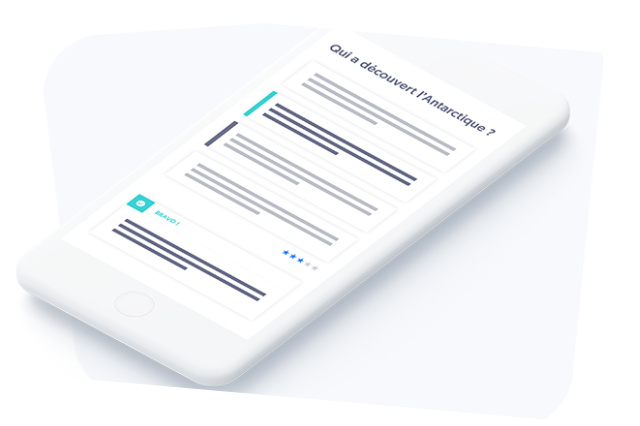Definition of m-learning
m-learning is a training approach based on the use of mobile devices such as smartphones and tablets to access educational content quickly, efficiently and anywhere.
This learning method has grown in popularity over time thanks to its flexibility, accessibility and possibilities that it offers in terms of personalization and gamification.
Compared to traditional face-to-face learning or even computer-based e-learning, m-learning offers a unique user experience tailored to the specific needs of each learner.
The advantages of m-learning
The benefits of m-learning are many and varied. Here are some of the most notable:
-
Flexibility: learners can train whenever they want, without constraints of time or place.
-
Accessibility: Educational content is available 24/7 via smartphone or tablet, allowing users to access resources whenever they need them.
-
Personalization: Training programs can be tailored to the specific needs and preferences of each learner, providing a more engaging and motivating experience.
-
Interactivity: m-learning promotes active learning through interactive tools such as quizzes, surveys and discussion forums.
-
Economy: the costs associated with m-learning are often lower than those of traditional methods, because there is no need for premises or expensive equipment. m-learning is based on digital learning tools, its cost will therefore be substantially the same as for the creation of a “classic” digital learning training based on e-learning modules.
The constraints of m-learning
Like any learning method, m-learning presents certain challenges that must be taken into account to ensure its success with different learners:
-
Connectivity: Internet access may be limited in certain regions or for certain users. A poor internet connection will not allow learners to benefit from a rich and productive experience. However, it is possible to circumvent this problem by offering downloadable content available “offline”.
-
The equipment: in order to be able to rely on m-learning to provide training, it is essential that all learners have a compatible mobile phone that has access to the internet.
-
Ergonomics: The small size of the screens of mobile devices can make reading and navigation difficult. A responsive design is therefore crucial to provide an optimal user experience.
-
Security: the protection of personal and professional data is essential, hence the importance of implementing adequate security measures in order to guarantee compliance with the rules in terms of GDPR.
-
The typology of learners: m-learning is not suitable for all profiles since you have to be comfortable with new technologies in order to be able to take advantage of this type of learning. For example, m-learning is not suitable for young children or the elderly.
The m-learning : a tool to prolong training
m-learning should rather be used in addition to more traditional training, that is to say, either face-to-face, or in blended learning, through e-learning modules or virtual classes.
After a training session, m-learning can, for example, be used in a micro learning approach to extend the training and anchor the achievements. The mobile phone is particularly suited to this type of practice since micro learning is based on short but repeated interactions.
The smartphone can also be used to respond to surveys, in particular for training assessment. The easier it is to answer a survey, the more individuals will be inclined to take a little time to complete the various questions.

